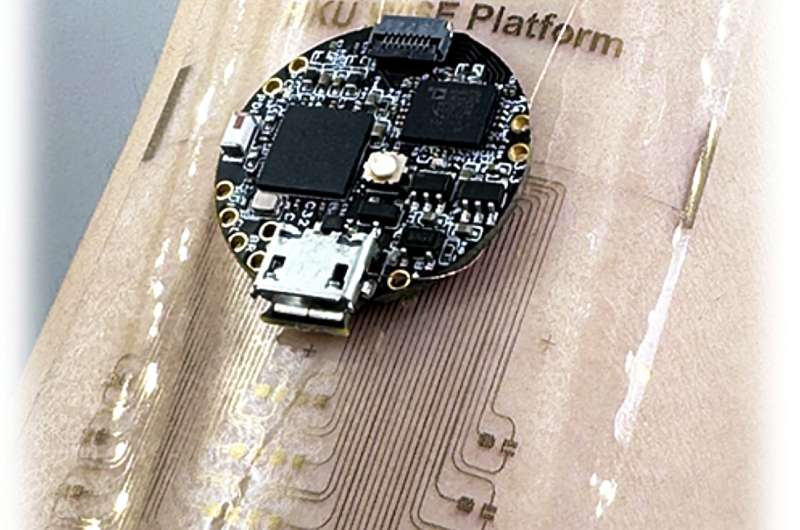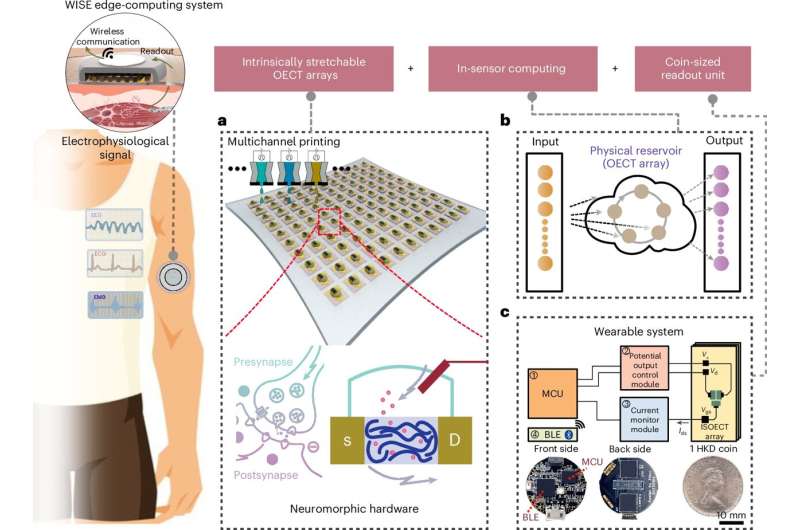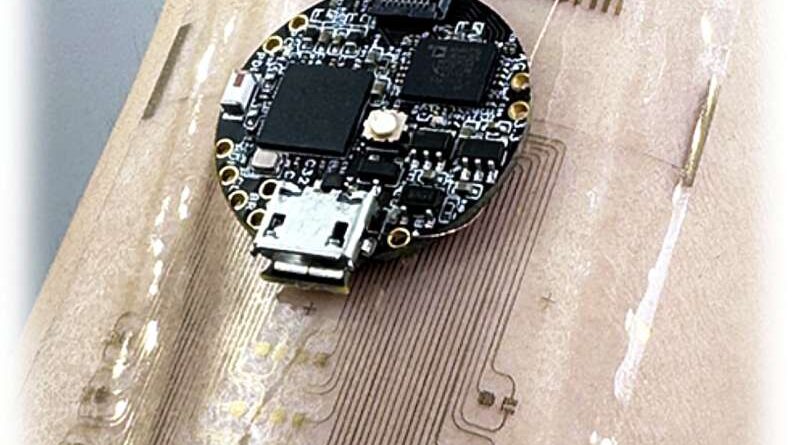Stretchable transistors used in wearable devices enable in-sensor computing

Credit: Liu et al.
Organic electrochemical transistors (OECTs) are neuromorphic transistors made of carbon-based materials that combine electronic and ionic carriers. These transistors can be very effective solutions for amplifying and converting electronic signals in devices designed to be placed on the human skin, such as smart watches, fitness trackers and other technologies. worn.
Unlike conventional neuromorphic transistors, OECTs can operate reliably in wet or humid environments, which can be very useful for medical and wearable devices. Despite their potential, most of the existing OECTs are based on rigid materials, which can reduce the comfort of clothing and thus hamper their mass transport.
Researchers at the University of Hong Kong have developed a new wearable device based on stretchable OECTs that can perform calculations and collect signals from the surrounding environment. Their proposed system, presented in a paper published in Natural Electronicscan be used to monitor in-sensor computing in a user-friendly wearable device.
“The rise of AI and machine learning has changed, breaking into various fields,” Shiming Zhang, co-author of the paper, told Tech Xplore.
“However, their deployment through wearables, which are essential to enabling digital health, is just beginning. Our goal is to embed machine learning capabilities into wearables. enabling in-sensor neuromorphic computing or edge-computing capabilities. This allows for real-time, edge-based decision making, which is essential for closed-loop and AI-driven medicine.”
As part of their study, Zhang and his colleagues set out to develop an AI-powered wearable device based on vertical OECT arrays. This involved developing machine learning algorithms and training them on biomedical datasets to make accurate predictions about the physiology and health of users.
“Combining our algorithms with wearables, we face three major challenges: collecting high-quality health data for accurate training, suppressing artifacts that move through the skin and simplicity, thus reducing data noise, and making algorithms for high computational efficiency,” said Zhang.
“Similarly, we use OECTs to achieve high-quality EMG signals of muscles; to generate stretching OECTs to reduce artifacts, and to use a specific AI algorithm, computing of storage, for efficient data training.”

Design strategy for a wearable computing unit in a coin-sized sensor (WISE platform) based on ISOECT clusters. Credit: Natural Electronics (2024). DOI: 10.1038/s41928-024-01250-9
The OECT developed by the researchers and included in their proposed wearable device is composed of vertical components, including an elastomeric substrate, a semiconducting polymer-based channel and a solid-gel electrolyte, as well as a gold source, water and gate electrodes. The transistors were found to exhibit more than 50% stretch, reaching sizes up to 100 μm.
The researchers created their direct transistors using a high-performance inkjet printing system, and then used it to create the smartwatch’s compatible in-sensor computer module. In the first tests, this module was found to be very effective, for example, predicting the hand gestures of the users wearing it with about 90% accuracy.
“In this project, we combine multidisciplinary knowledge – materials science, manufacturing, electronics, AI and medicine,” added Zhang.
“The proposed WISE (Wearable, Intelligent, and Soft Electronics) platform is universal and can be easily adapted for other computational wearable devices. This system has the potential to improve health outcomes for diseases of many, to help both patients and the community at large.”
Additional information:
Dingyao Liu et al, A portable in-sensor computing platform based on stretchable organic electrochemical transistors, Natural Electronics (2024). DOI: 10.1038/s41928-024-01250-9.
© 2024 Science X Network
Excerpt: Stretchable transistors used in wearable devices enable in-sensor computing (2024, October 19) Retrieved on October 21, 2024 from https://techxplore.com/news/2024-10-stretchable -transistors-wearable-devices-enable.html
This document is subject to copyright. Except for any legitimate activity for the purpose of private study or research, no part may be reproduced without written permission. Content is provided for informational purposes only.
#Stretchable #transistors #wearable #devices #enable #insensor #computing
